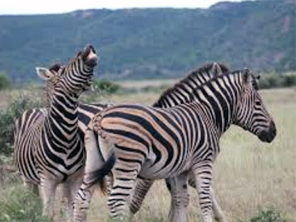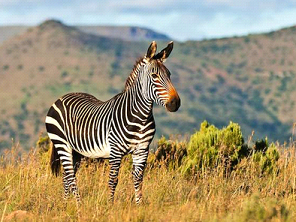Facts about zebras
The 3 Zebra Species
Zebras are unique single-hoofed mammals found in eastern and southern Africa. They don't live in rainforests, deserts, or wetlands. There are three species: the Grevy's zebra, the mountain zebra, and the plains zebra.
Grevy's Zebra

The Grevy’s zebra is known for its regal appearance and narrow stripes. It has a more solitary and territorial lifestyle. Endangered, it’s mostly found in Kenya and Ethiopia.
Plains Zebra

This is the most common zebra species, recognizable by its wide, pale stripes. Found in Serengeti and other African plains, they live in large herds and are not endangered.
Mountain Zebra

These zebras live in small groups in rugged terrains. They have hard hooves and bold stripes. Though once critically endangered, conservation efforts are helping stabilize their numbers.
Fun Fact: You can tell the species apart by their stripe patterns: Grevy's have narrow stripes, plains zebras have shadow stripes under the belly, and mountain zebras have bold leg stripes.
Do you have a question for Ruben Geerlings? Ruben Geerlings
Ruben Geerlings
 If one is not the other
If one is not the other
 Webdesign
Webdesign